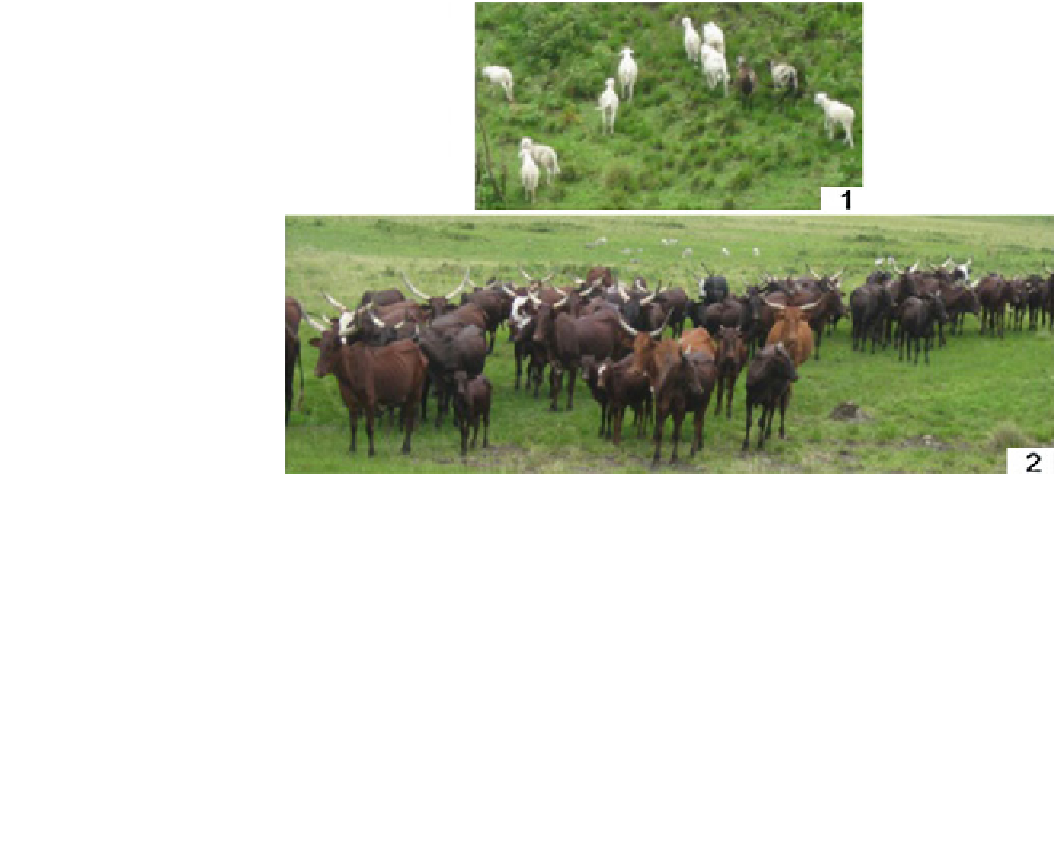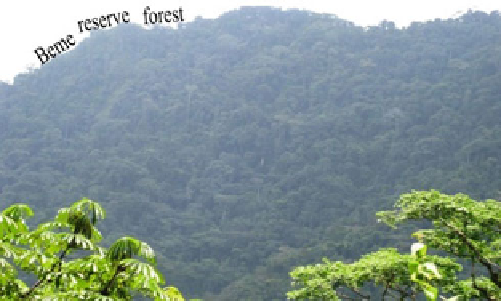Geology Reference
In-Depth Information
Fig. 18
The breeding activity
highlighted by sheeps
fl
ock (
1
)
and cattle herd (
2
)
pozzolana renders it useful in manufacturing bond-stones
and concretes, and in the surfacing of roads and terraces
(Fig.
21
). Blocks of volcanic rocks are also used for the
building of foundations and the surfacing of walls and road
embankments.
The greatest threat to the geodiversity in this region is
probably the ignorance about the potential impacts and
activity (Gray
2008
). Quarrying is the main threat to the Mt
Manengouba geomorphosites. More than three quarries are
deserted, but they now represent an anthropogenic landscape
that plays a scienti
c and educational role in geotourism
(Gavrila et al.
2011
).
Fig. 19
The forest reserve in the Beme village
2.2.4 Education
Mt Manengouba geomorphosites are important assets for
research and science. Due to its geological history, petro-
graphic variability, structure and geomorphology, many
Elengoum caldera and on the external slopes of the whole
volcano (Fig.
19
). Both forest types, due to the richness of
their fauna, support hunting; however, hunting is the less-
developed activity in the region.
eld
studies are carried out by secondary schools and universities
and other research institutions. Young scientists undertaking
Masters and Ph.D. degrees are increasingly focusing their
research in this region (Fig.
22
).
There are several tens of streams and four thermo-mineral
water springs in this region. The major streams are the
collecting zone of smaller streams and are very useful for
local purposes. The thermo-mineral water springs are found
in Bar
2.2.3 Civil Engineering Works
Mt Manengoubais is composed of several rocks types
(Kagou Dongmo et al.
2005
; Zangmo Tefogoum
2007
;
Zangmo Tefogoum et al.
2011a
). The most widespread is
pyroclastic ejecta that formed the numerous cones in the
volcano, and consists mainly of pozzolana that reacts with
lime to form the cement (Wandji and Tchoua
1988
). As
such, pozzolana is used for the local manufacture of cement
and for civil engineering works which led to the opening of
several quarries by local councils and residents on the
, Ngol, Nsoung and Bangem (Tchoua
1974
; Kagou
Dongmo et al.
1999
). Thermo-mineral water springs
(Figs.
23
and
24
) are a post-volcanic product in Mt Ma-
nengouba. Thus, they are helpful in the training of scholars
in the volcanic processes along the CL.
é
anks
of Mt Manengouba (Fig.
20
). Moreover, the friability of
fl


